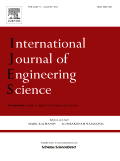
INTERNATIONAL JOURNAL OF ENGINEERING SCIENCE
Scope & Guideline
Fostering a Global Community of Engineering Scholars
Introduction
Aims and Scopes
- Multiscale Modeling and Analysis:
The journal emphasizes research that employs multiscale approaches to understand material behavior and structural mechanics, bridging the gap between nanoscale phenomena and macroscopic applications. - Advanced Material Mechanics:
Focus on the mechanics of advanced materials, including composites, nanomaterials, and smart materials, with studies addressing their mechanical properties, behaviors under various loading conditions, and applications in engineering. - Computational Mechanics and Simulation:
A core area of interest is the development and application of computational methods for simulating complex engineering problems, including finite element analysis, molecular dynamics, and continuum mechanics approaches. - Thermal and Electromechanical Behavior:
Research exploring the coupling of thermal, mechanical, and electrical fields in materials and structures, particularly in the context of smart materials and energy applications. - Nonlinear Mechanics and Stability Analysis:
The journal includes studies on nonlinear behaviors in materials and structures, focusing on stability analysis, bifurcation phenomena, and dynamic response to external forces. - Innovative Experimental Techniques:
Papers that report on novel experimental methods for characterizing materials and validating theoretical models are also welcomed, enhancing the empirical foundation of engineering science.
Trending and Emerging
- Nanotechnology and Nanomaterials:
There is a growing emphasis on the study of nanotechnology, particularly in the context of materials with unique properties at the nanoscale, and their applications in engineering. - Multiphysics Modeling:
Research that integrates multiple physical fields, such as thermal, mechanical, and chemical interactions, is on the rise, showcasing the complexity of real-world engineering problems. - Machine Learning and AI in Engineering:
The application of machine learning and artificial intelligence techniques for predictive modeling, optimization, and data analysis in engineering contexts is increasingly popular, indicating a shift towards data-driven approaches. - Smart Materials and Structures:
Research focusing on the development and application of smart materials and structures that respond dynamically to environmental changes or stimuli is trending, highlighting their potential in various engineering applications. - Sustainability and Energy Efficiency:
There is an emerging focus on sustainable engineering practices, including the design and analysis of materials and systems that promote energy efficiency and environmental responsibility.
Declining or Waning
- Traditional Elasticity Theory:
Research focused solely on classical elasticity without incorporating modern advancements or interdisciplinary approaches is becoming less frequent, as newer theories and models take precedence. - Basic Fluid Mechanics:
Fundamental studies in fluid mechanics without the integration of complex interactions or advanced modeling techniques are declining, as the field moves towards more applied and interdisciplinary approaches. - Static Analysis of Structures:
There is a noticeable reduction in papers dedicated to static analysis, with a growing preference for dynamic analysis and time-dependent behaviors in structures, reflecting the increasing complexity of real-world applications. - Conventional Material Testing Methods:
Studies that utilize standard material testing methods without innovative adaptations or applications in novel contexts are appearing less frequently, as researchers seek to push the boundaries of material characterization. - Simplistic Models of Material Behavior:
Papers that rely on overly simplified models of material behavior, neglecting the complexities of microstructural influences and multi-physics interactions, are becoming less common, as the field demands more sophisticated approaches.
Similar Journals

JOURNAL OF ELASTICITY
Advancing the Frontiers of Elasticity ResearchJOURNAL OF ELASTICITY is a prestigious peer-reviewed journal dedicated to the study and advancement of the field of elasticity and its numerous applications across various disciplines. Published by SPRINGER, and located in the Netherlands, this journal has been a key resource since its inception in 1971, providing critical insights and developments up through 2024. With a commendable impact factor and categorized within the Q2 quartile in areas such as Materials Science, Mechanical Engineering, and Mechanics of Materials, the journal maintains a significant standing in the academic community. Researchers and professionals will find a wealth of knowledge through advanced theoretical and experimental studies published within its pages, contributing to both foundational understanding and practical applications. While currently not an open access publication, the JOURNAL OF ELASTICITY remains an essential platform for innovative research and discussions that shape the future of mechanical sciences.

Mechanical Sciences
Pioneering discoveries in the world of mechanical sciences.Mechanical Sciences is a prominent open-access journal published by COPERNICUS GESELLSCHAFT MBH since 2010, dedicated to advancing the field of mechanical engineering and its multidisciplinary applications. Operating from Göttingen, Germany, the journal has established a vital platform for researchers and professionals alike, facilitating the sharing of original research, reviews, and innovative methodologies across various domains, including civil and structural engineering, control and systems engineering, fluid flow, industrial engineering, and mechanics of materials. With a current impact factor placing it in the Q3 category across several engineering disciplines, Mechanical Sciences provides a valuable resource that not only highlights emerging trends but also contributes to the ongoing discourse within the engineering community. The journal's commitment to open access ensures that its content is widely accessible, encouraging collaboration and knowledge sharing among students, educators, and industry experts worldwide. As it continues to converge towards 2024, Mechanical Sciences remains an essential reference for anyone invested in the mechanics of engineering and related fields.
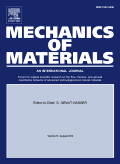
MECHANICS OF MATERIALS
Unlocking the Potential of Materials Through Rigorous ResearchMECHANICS OF MATERIALS, published by ELSEVIER, is a premier international journal serving the dynamic fields of Materials Science and Mechanics. With an esteemed reputation reflected in its 2023 Quartile rankings—Q1 in Instrumentation, Q1 in Materials Science (miscellaneous), and Q1 in Mechanics of Materials—this journal offers a vital platform for the dissemination of cutting-edge research from 1982 to the present. Operating from its headquarters in Amsterdam, Netherlands, the journal boasts impressive Scopus ranks, including 22nd in Physics and Astronomy (Instrumentation) and 67th in Engineering (Mechanics of Materials), placing it firmly within the top echelons of academic publishing. Though not an open-access journal, its rigorous peer-reviewed content ensures high-quality contributions aimed at advancing knowledge and application in mechanics and materials. Researchers, professionals, and students are encouraged to engage with the latest studies and findings that underpin innovations in material properties, testing methodologies, and engineering applications, reinforcing the journal’s critical role in shaping the future of the discipline.

International Journal of Mechanics and Materials in Design
Unveiling Insights in Mechanics and Materials for a Sustainable FutureInternational Journal of Mechanics and Materials in Design is a leading publication in the field of mechanical engineering and materials science, published by Springer Heidelberg. With an impressive impact factor, it holds esteemed rankings as Q1 in both Mechanical Engineering and Mechanics of Materials, and Q2 in Materials Science for the year 2023, solidifying its reputation as a significant contributor to the advancement of design methodologies. The journal focuses on the intersection of mechanics and materials, encouraging innovative research that addresses contemporary challenges faced in engineering disciplines. Researchers and professionals alike can benefit from accessing cutting-edge studies contributing to various applications, making it an invaluable resource for staying informed in this dynamic field. While the journal operates under a subscription model, its comprehensive reviews and high-quality original research foster a deeper understanding of material behavior and design principles, thus supporting the academic growth and professional development of its readers.
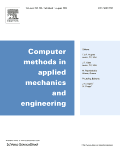
COMPUTER METHODS IN APPLIED MECHANICS AND ENGINEERING
Advancing the Frontiers of Computational Mechanics.COMPUTER METHODS IN APPLIED MECHANICS AND ENGINEERING, published by Elsevier Science SA, is a premier journal that has significantly contributed to the fields of computational mechanics, computer science applications, mechanical engineering, and the mechanics of materials since its inception in 1972. With an ISSN of 0045-7825 and an E-ISSN of 1879-2138, this journal is recognized for its rigorous peer-review process and is consistently ranked in the Q1 quartile across multiple categories, including Computational Mechanics and Mechanical Engineering. Its impressive Scopus rankings place it in the top tiers of its field, with a percentile ranking of 98th in Computational Mechanics. Researchers, professionals, and students will find the journal's comprehensive scope and high-quality articles invaluable for advancing their knowledge and practices at the intersection of engineering and computation. Although not an open-access journal, its impactful contributions to both theoretical and applied research make it an essential resource for anyone involved in these dynamic fields.
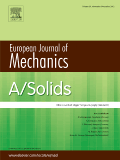
EUROPEAN JOURNAL OF MECHANICS A-SOLIDS
Exploring Innovations in Material ScienceThe EUROPEAN JOURNAL OF MECHANICS A-SOLIDS, published by ELSEVIER and based in the Netherlands, stands as a premier outlet for research in the field of solid mechanics. With an impressive track record since its inception, the journal has been indexed in prestigious categories including Materials Science, Mechanical Engineering, and Mathematical Physics, achieving Q1 quartile status across these domains in 2023. This recognition underscores the journal's impact, with Scopus rankings placing it in the top echelon of its respective fields, such as #39 in General Physics and Astronomy and #116 in Mechanical Engineering, demonstrating its significance and wide-reaching influence in the academic community. Scientists, engineers, and researchers are encouraged to submit their cutting-edge findings in areas related to solid mechanics, contributing to the journal's mission of advancing knowledge and innovation in this vital discipline. The journal's comprehensive scope allows for interdisciplinary engagement, making it an essential resource for professionals and students alike seeking to explore the latest developments in mechanics of materials and related areas.
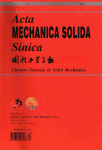
ACTA MECHANICA SOLIDA SINICA
Exploring Innovations in Mechanics of MaterialsACTA MECHANICA SOLIDA SINICA is a prestigious journal published by Springer, dedicated to advancing research in the fields of Computational Mechanics, Mechanical Engineering, and Mechanics of Materials. Since its inception in 1981, the journal has established a significant presence in the academic community, holding a commendable Q2 ranking across its categories as of 2023. Furthermore, it is recognized for its impactful contributions, with Scopus rankings placing it in the top quartiles, fostering essential discourse among professionals and researchers in the engineering domain. While it operates under a traditional access model, ACTA MECHANICA SOLIDA SINICA continues to provide valuable insights and developments, making it an essential resource for those seeking to deepen their understanding of solid mechanics and related disciplines. The journal remains an influential platform for innovative theoretical and experimental studies, reinforcing its status in the global academic landscape.
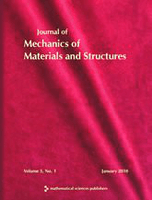
Journal of Mechanics of Materials and Structures
Pioneering Developments in Mechanics of Materials and Structures.Journal of Mechanics of Materials and Structures, published by Mathematical Science Publishers, is a distinguished periodical in the field of Applied Mathematics and Mechanics of Materials. With the ISSN 1559-3959, this journal has been a pivotal platform since its inception in 2006, providing insights and advancements in the mechanics of materials and their structural applications. Operating out of the University of California, Berkeley, this journal not only boasts a respectable standing within its categories, ranking Q4 in Applied Mathematics and Q3 in Mechanics of Materials as of 2023, but it also serves a crucial role in fostering academic discourse among researchers, practitioners, and students alike. Although it does not currently offer open access, its contributions to the respective fields are invaluable, underscoring the relevance and importance of continued research in understanding material behavior and structural integrity. Whether investigating theoretical frameworks or engineering applications, the Journal of Mechanics of Materials and Structures remains an essential resource for anyone dedicated to the advancement of the science of materials and structures.

Journal of Computational Applied Mechanics
Catalyzing Knowledge Sharing in Computational MechanicsJournal of Computational Applied Mechanics, published by UNIV TEHRAN, DANISHGAH-I TIHRAN, is an influential open-access journal that has been disseminating significant research findings since its inception in 2012. With a dedicated focus on the fields of Computational Mechanics, Mechanical Engineering, and Mechanics of Materials, this journal has garnered a Q3 ranking in multiple relevant categories as of 2023, indicating its burgeoning impact within the academic community. Although precise HIndex scores are currently unavailable, the journal's recognition is underscored by its Scopus rankings, placing it in the middle tier among its peers. The journal invites researchers, professionals, and students to contribute to and engage with the continually evolving discourse in applied mechanics, fostering innovation through the dissemination of quality research. As an open-access journal, it ensures that findings are readily accessible to a global audience, thereby enhancing collaboration and knowledge sharing in the scientific community.
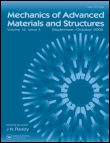
MECHANICS OF ADVANCED MATERIALS AND STRUCTURES
Illuminating the mechanics behind advanced materials and structures.Mechanics of Advanced Materials and Structures is a distinguished journal published by Taylor & Francis Inc, focusing on the innovative fields of Civil and Structural Engineering, Materials Science, Mechanical Engineering, and Mechanics of Materials. With ISSN 1537-6494 and E-ISSN 1537-6532, this journal is positioned within the Q2 quartile rankings of its categories, demonstrating its significant scholarly impact. It has been a pivotal platform since its inception in 1997, providing researchers and professionals with comprehensive insights and the latest findings, until the expected closure in 2024. Situated in the United Kingdom, the journal is dedicated to enhancing the understanding of complex materials and structural behavior through rigorous peer-reviewed articles. Its high visibility in Scopus rankings further underscores its importance, making it an essential resource for those engaged in advanced materials research and structural analysis. With options for open access, the journal ensures broad dissemination of knowledge, fostering a collaborative environment for researchers, practitioners, and students alike.